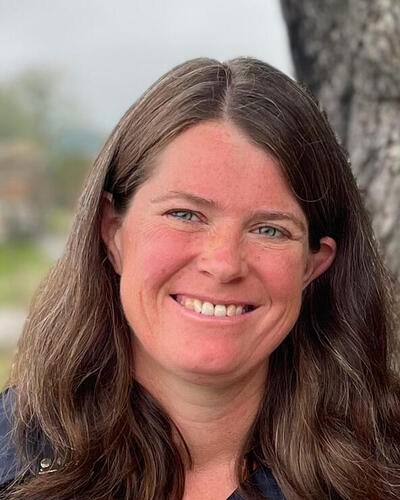- E-mailIngeborg.Winge@uib.no
- Visitor AddressHIB - Thormøhlens gate 555006 Bergen
- Postal AddressPostboks 78035020 Bergen
I am working as a Node coordinator / Project manager of ELIXIR Norway, the national research infrastructure for bioinformatics and the Norwegian Node of ELIXIR Europe (https://elixir.no). Part of the ELIXIR Norway leader group.
Part of my tasks are:
- Coordinate activities, collaboration and communication within ELIXIR Norway, with the ELIXIR Hub/headquarter and with other ELIXIR nodes.
- Initiate and coordinate networks with stakeholders locally, nationally and internationally.
- Contribute to initiation and facilitation of networks within infrastructure development between the partner institutions and external collaborators.
- Deeply involved in all funding proposals by ELIXIR Norway.
- Manage and coordinate ELIXIR Norway's portfolio of externally funded projects, e.g. from the Research Council of Norway, NordForsk and EU
- Lead work packages on Management in projects run by ELIXIR Norway (ELIXIR3, BioMedData), responsible for project deliverables and associated reporting
- Responsible for a number of investigations and reports, including comments on emerging national policies and strategies
- Part of various thematic working groups across Europe with other ELIXIR staff.
Previous coordinator and lecturer of CCBIO905, Methods in Cancer Biomarker Research
Publikasjoner
- Kjølle S, Finne K, Birkeland E, Ardawatia V, Winge I, Aziz S, Knutsvik G, Wik E, Paulo JA, Vethe H, Kleftogiannis D, Akslen LA. “ Hypoxia induced responses are reflected in the stromal proteome of breast cancer.» Nat Commun. 2023 Jun 22;14(1):3724
- Milosevic V, Edelmann RJ, Winge I, Strell C, Mezheyeuski A, Knutsvik G, Askeland C, Wik E, Akslen LA, Östman A. “Vessel size as a marker of survival in estrogen receptor positive breast cancer.” Breast Cancer Res Treat. 2023 Jul;200(2):293-304
- Bjørnstad OV, Carrasco M, Finne K, Winge I, Askeland C, Arnes JB, Knutsvik G, Kleftogiannis D, Paulo JA, Akslen LA, Vethe H. « Global and single-cell proteomics view of the co-evolution between neural progenitors and breast cancer cells in a co-culture model.» bioRxiv. 2023 May 5:2023.05.03.539050.
- Mahootchi E, Cannon Homaei S, Kleppe R, Winge I, Hegvik TA, Megias-Perez R, Totland C, Mogavero F, Baumann A, Glennon JC, Miletic H, Kursula P, Haavik J.: “GADL1 is a multifunctional decarboxylase with tissue-specific roles in β-alanine and carnosine production.» Sci Adv. 2020 Jul 17;6(29) Breast Cancer Res Treat. 2023 Jul;200(2):293-304
- Raasakka A, Mahootchi E, Winge I, Luan W, Kursula P, Haavik J.: “
Structure of the mouse acidic amino acid decarboxylase GADL1.» Acta Crystallogr F Struct Biol Commun. 2018 Jan 1;74 - Winge I, Teigen K, Fossbakk A, Mahootchi E, Kleppe R, Sköldberg F, Kämpe O, Haavik J.: “ Mammalian CSAD and GADL1 have distinct biochemical properties and patterns of brain expression.» J.Neurochem Int. 2015 Nov;90:173-84
- Mavroconstanti T, Johansson S, Winge I, Knappskog PM, Haavik J. “Functional properties of rare missense variants of human CDH13 found in adult Attention Deficit/Hyperactivity Disorder (ADHD)patients” PLoS One. 2013 Aug 1;8(8)
- Winge I., McKinney J.A. and Haavik J.: “Tryptophan Hydroxylase”. Book series:“Amino acids in human nutrition and health”. Cabi Publishing, 2011, Section 1, chapter 10. Editor Dr. JPF D’Mello
- Halmøy A., Johansson S., Winge I., McKinney J.A, Knappskog P.M., and Haavik J.: “Attention-deficit/hyperactivity disorder symptoms in offspring of mothers with impaired serotonin production.” Arch Gen Psychiatry. 2010 Oct;67(10):1033-43.
- Calvo A.C., Scherer T., Pey A.L., Ying M., Winge I., McKinney J.A., Haavik J., Thöny B., Martinez A.: “Effect of pharmacological chaperones on brain tyrosine hydroxylase and tryptophan hydroxylase 2.”. J Neurochem. 2010Aug;114(3):853-63
- Mavroconstanti , T ; Winge, I; Mckinney, J; Johansson ,S; Knappskog, P; Haavik, J.: “Functional Studies of Candidate genes involved in Attention-deficit-Hyperactivity Disorder” European Psychiatric Review , 2010;3 (1) :44-6
- McKinney JA, Turel B, Winge I, Knappskog PM, Haavik J. “Functional properties of missense variants of human tryptophan hydroxylase 2.” Hum Mutat. 2009 May;30(5):787-94
- McKinney J., Johansson S., Halmoy A., Dramdahl M., Winge I. et al. "A loss-of-function mutation in tryptophan hydroxylase 2 segregating with attentiondeficit//hyperactivity disorder." Mol Psychiatry 2008, 13(4): 365-367.
- Winge I., McKinney J. A.et al. "Activation and stabilization of human tryptophan hydroxylase 2 by phosphorylation and 14-3-3 binding." Biochem J 2008 410(1): 195-204.
- Cichon S., Winge I. et al. "Brain-specific tryptophan hydroxylase 2 (TPH2): a functional Pro206Ser substitution and variation in the 5'-region are associated with bipolar affective disorder." Hum Mol Genet 2008 17(1): 87-97.
- Winge I., McKinney J. A. et al. "Characterization of wild-type and mutant forms of human tryptophan hydroxylase 2." J. Neurochem. 2007 100 (6): 1648-1657.
- Winge I., Pryme IF. “Sodium butyrate stimulates the synthesis of firefly luciferase in transfected CHO cells but levels of BiP chaperone are unaffected” Cell Biol Int2002;26(6):489-94
- (2023). Vessel size as a marker of survival in estrogen receptor positive breast cancer. Breast Cancer Research and Treatment.
- (2023). Hypoxia induced responses are reflected in the stromal proteome of breast cancer. Nature Communications. 1-16.
- (2023). Regler for åpen deling av data - til hjelp eller hinder?
- (2022). Neurogenesis and angiogenesis are associated features of aggressive breast cancer . bioRxiv.
- (2020). GADL1 is a multifunctional decarboxylase with tissue-specific roles in β-alanine and carnosine production. Science Advances. 1-19.
- (2018). Structure of the mouse acidic amino acid decarboxylase GADL1. Acta Crystallographica. Section F : Structural Biology and Crystallization Communications. 65-73.
- (2015). Mammalian CSAD and GADL1 have distinct biochemical properties and patterns of brain expression. Neurochemistry International. 173-184.
- (2013). Functional properties of rare missense variants of human CDH13 found in adult attention deficit/hyperactivity disorder (ADHD) patients. PLOS ONE. 9 pages.
- (2010). Functional studies of candidate genes involved in ADHD. European Psychiatric Review. 44-46.
- (2010). Effect of pharmacological chaperones on brain tyrosine hydroxylase and tryptophan hydroxylase 2. Journal of Neurochemistry. 853-863.
More information in national current research information system (CRIStin)
